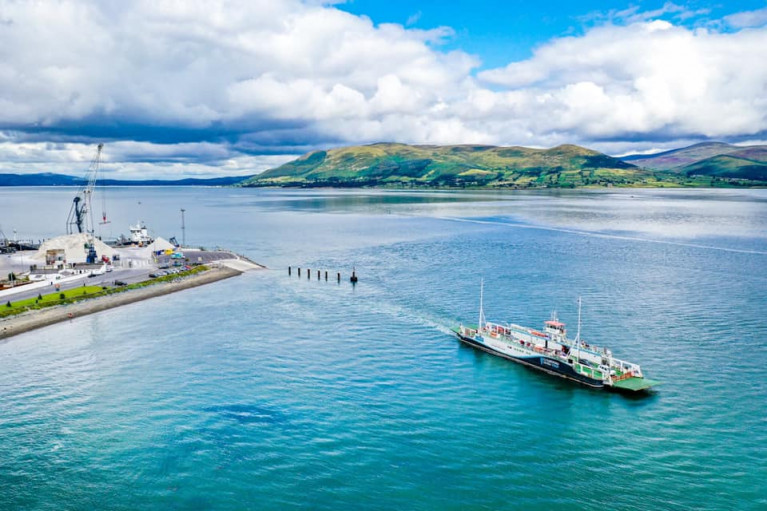Displaying items by tag: Ferry 'Cruises'
Rare Opportunity As Ferry 'Cruises' from Carlingford Lough Out to Haulbowline Lighthouse
In an effort to restore even a hint of tourism activity while the Covid-19 restrictions are gradually eased across Ireland, Carlingford Lough Ferry is launching special 'Lighthouse' cruises out to entrance of the scenic lough, writes Jehan Ashmore
The car-ferry Frazer Aisling Gabrielle had been operating the 15 minute cross border Co.Louth (Greenore)/Down (Greencastle) service but due to the escalating Covid19 situation in March, sailings were suspended until further notice.
Operator, Frazer Ferries hope to resume the service in the summer. In the meantime, Frazer Aisling Gabrielle is instead to offer ‘walk on’ passenger cruises onboard the 45m long ferry. The cruises departing from Greenore terminal in Co. Louth is to take place on Saturday, 20 June.
These special and rare 1 hour cruises will involve the ferry been within 400m of the impressive Haulbowline Lighthouse. (See Shine a Light for Healthcare Heroes) The structure to aid mariners jutts dramatically out of the sea and marks the entrance to the stunning scenery of Carlingford Lough.
Those intending taking a cruise are advised to book as soon as possible, due to demand noting passenger numbers are strictly limited in line with the current public safety guidelines.
Onboard will be a fascinating audio tour that will offer insights into glacial fjord with panoramic views sweepong between the Cooley peninsula and as they say the Mourne Mountains that sweep down to the sea!
The Lighthouse themed cruises are especially designed to allow guests to travel in safety and comfort on board the 45m long ferry which with the abscence of cars will provide platforms to take in the views. In order to do, safe social distancing and standing areas will be clearly marked on the upper and lower decks.
In light of current Covid Safety guidelines and for passengers safety, Frazer Ferries request those with families of young children, book tickets for the lower viewing deck area which offers greater space and allows for additional movement, whilst adhering to the required social distancing during the cruise.
According to the operator this Friday afternoon, there are still some tickets available HERE for the cruises. Scroll down the page for additional information on parking in Greenore.
The first sailing on Saturday, 20 June is at 11.30 returning at 1pm and the second sailing is at 2.30 returning at 4pm.
Sailing time is approx 70 mins and the rest of time allows for boarding - departure - arrival and disembarkation.
Whatever cruise is booked, it is strongly advisable to arrive at the terminal 20 minutes prior to the departure for check-in.





























































